“What the hell is that?!” I asked the horse trainer at the farm where I’d picked up work while house sitting in New Hampshire.
Sitting shotgun in his big black pick-up truck, I stared out the window at the neighbor’s untidy scene. Plastic tubing wound in and out of giant steel containers, all of it strung between a stand of naked trees.
Not that I know the first thing about meth labs, but this situation looked sketchy enough to qualify.
Horse trainer laughed. In his North Carolina drawl he asked, “Whaddya mean?”
“Back there. The neighbors. What is that mess they have going on outside?”
“Oh… That’s a sap operation.”
Welcome to New England!
Many know the term “New England” without knowing exactly where and which states we’re talking about. Officially, the designation includes Maine, New Hampshire, Vermont, Massachusetts, Connecticut, and Rhode Island, although many northern New Englanders begrudgingly admit the latter, southern two.
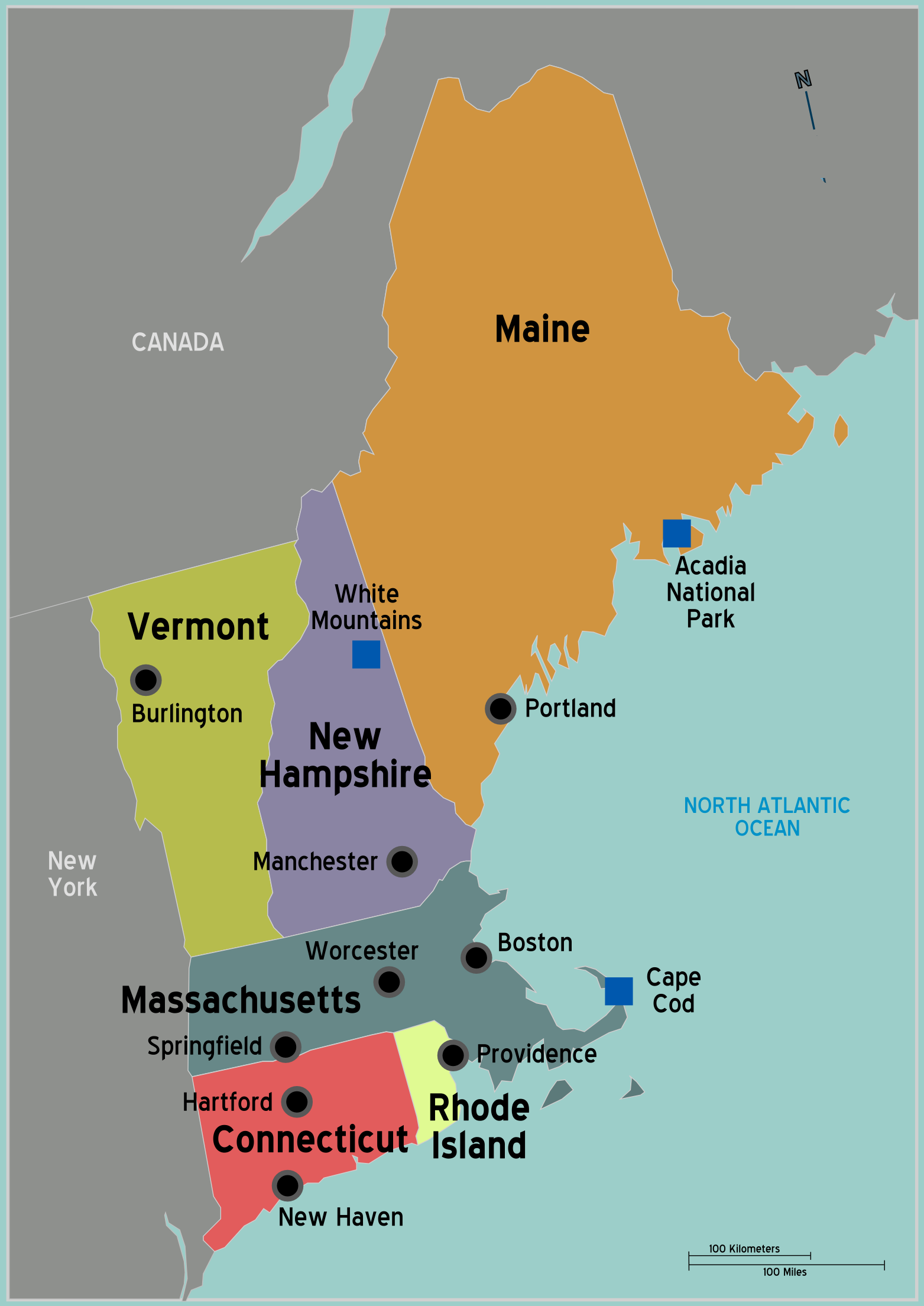
How’s your geography when it comes to places you’ve yet to visit? Atrocious? Me, too! Even with three decades of looking at maps of America, a year ago I couldn’t have told you Maine doesn’t share a southern border with any state. It’s all Atlantic, baby! photo: wikimedia
The infamous autumn leaf colors welcomed me and then quickly dropped before my second week of explorations. The most shocking of my discoveries? The postcards full of covered bridges, stone walls, colonial churches, slate headstone graveyards, and backcountry lanes with maples on both sides aren’t just idyllic photo snaps. In other U.S. regions, historic buildings are an anomaly that shine against the backdrop of muted, modern constructions. Across the rest of the nation, calendar photos of state-famous waterfalls don’t show the interstates that run within hearing distance of the parking lots. In New England, none of the postcard characteristics are token. The entire region is its postcards.
Stone walls are something you’d see dozens of times on a trip to the grocery store. You couldn’t drive more than a few miles without seeing a 200 year old farm house. Every single village has a handful of churches — all colonial — and graveyards with the kind of headstones I thought sprung from a Hollywood filmmaker’s imagination.

Usually the graveyards are nestled in the infamous New England woods. photo: Don White
As luck would have it, my house sitting neighbors invited me to a talk at the local library soon after my arrival. The topic: the cultural history of New England!
A magazine journalist explained that during the first big economic boom of the 1980’s, other places underwent a visual transformation during the growth. The sense of thrift for which New Englanders are well known, however, preserved buildings. “If it’s not broken, let’s keep it,” they thought.
The journalist discussed two individuals who originally capitalized on New England’s cultural hallmarks. Norman Rockwell, born 1894, was the first. While known for capturing classic American scenes, the writer revealed that Rockwell’s paintings were actually of scenes he created. His cohort — Wallace Nutting, who was an inventive preservationist – was the first to start churning out New England icons for mass consumption.
The talk’s conclusion considered its title — New England: Myth or Reality — and decided that it is both.
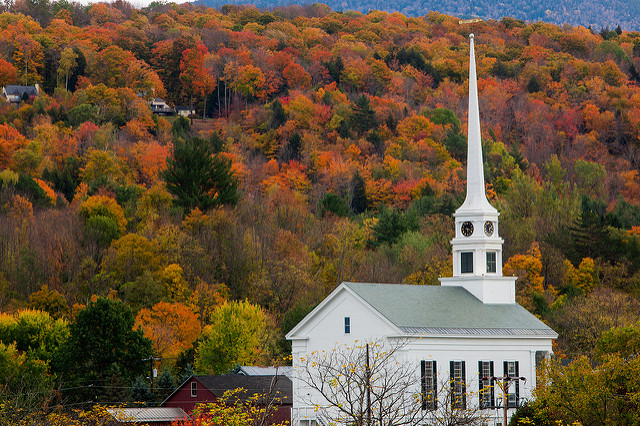
New England culture begets charming preserved structures set against the region’s natural beauty. photo Anthony Quintano
Whichever it is, outsiders like me continue to find it brilliantly charming.
When asking a woman I befriended about my favorite New England nighttime scene — houses sporting a single candle 1now usually electric in each window, she laughed. As we drove toward Hannukah dinner at her in-laws’, she realized she’d never considered the localness of the tradition. I pointed out how the evenly spaced windows and symmetry of colonial homes lend themselves to the overall aesthetic.
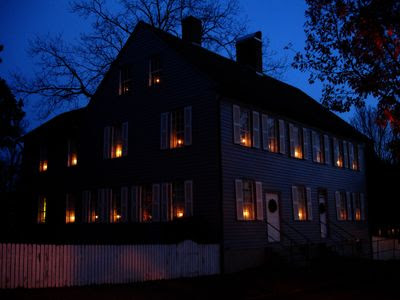
According to a new defunct website, the candle in window concept first became popular in Colonial Williamsburg (Virginia) in the 1930’s before allegedly spreading “all across America.” If “America” means the east coast… true! I’ve spent significant time in every state in the west and never seen this. photo: shambull says
Speaking of localness, another unique New England facet: people often stay put. It’s my observation, after traveling to a few dozen countries around the world, that nowhere are people socialized to leave their childhood homes more than in America. In the U.S., staying is for losers. Our corporate culture values individuals who actually do something with their lives — who strike out and bootstrap a career somewhere bigger and better than where they grew up. And so it goes that people who stay feel like failures and are compelled to make excuses about why they never left. And so it goes that people who left reach their 30’s, have a few kids, realize their family is more important to them than anything else in the world, suddenly discern that their hometown actually had plenty to offer, and either move back home or spend their child-rearing years wistfully wishing they lived closer.
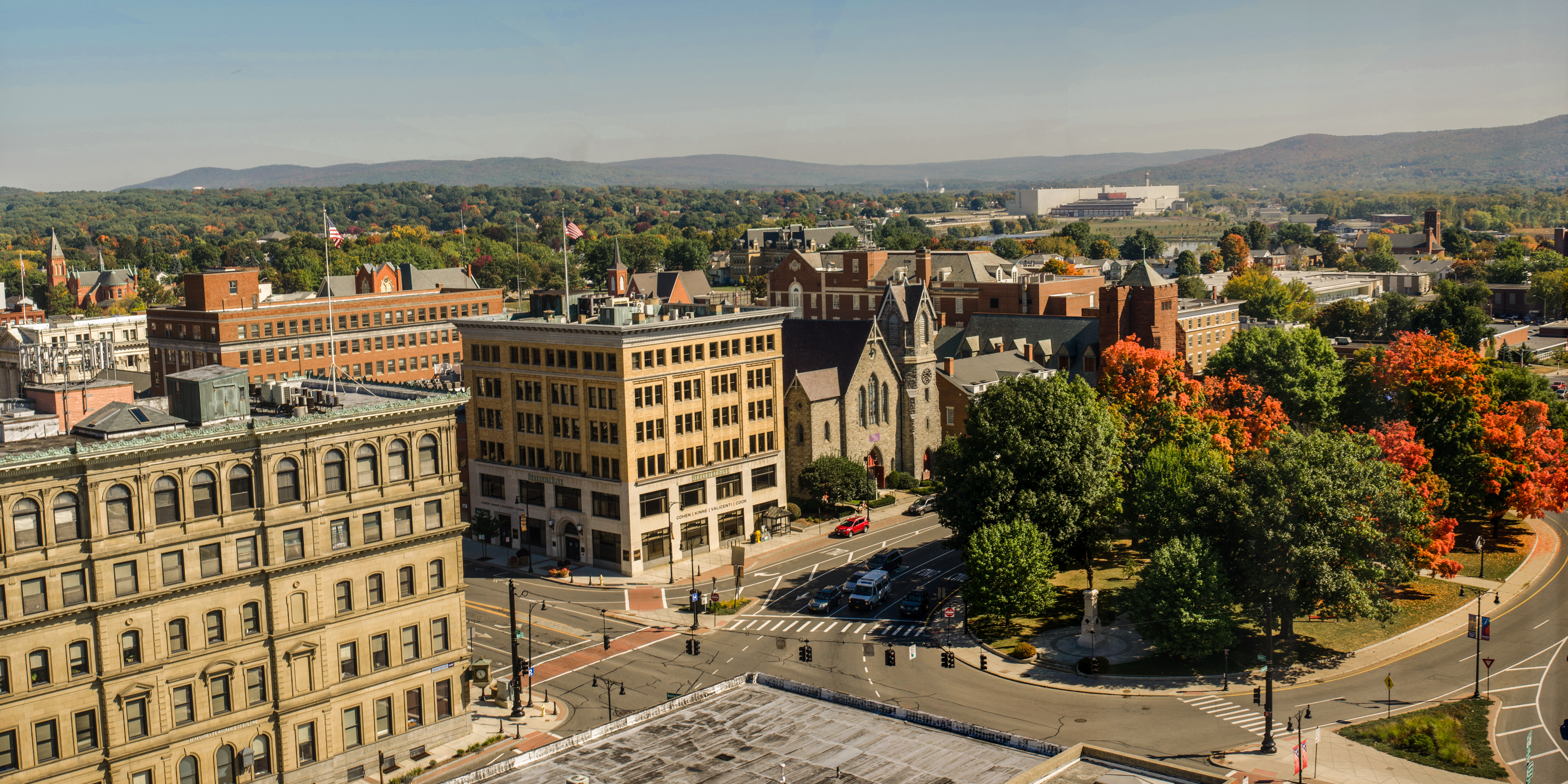
Who wouldn’t want to live in a charming small town where you are intimately familiar with all the local resources, the seasons, and the community pulse?! photo: wikimedia
.
In New England, apparently occasionally referred to as “little Europe,” the historic commonality of people living their whole lives in one community drives a cultural simplicity and authenticity. When everyone knows who you are, there is little room for pretension. The infamously hard winters — deep snow and freezing temperatures for many dark months — drive a certain nose-to-the-grindstone constitution and work-ethic. I suppose that same required hardness is also responsible for the reputation New Englanders have as “cold, narrow, and miserly people.”
It’s true that a neighbor woman whose front door I’d knocked on in order to introduce myself confessed, “This is nice. We don’t really talk to each other here.” It’s true that a fellow outsider complained to me about how his efforts at casual conversation with strangers had been mostly met with cold, blank stares. It’s true that when I drive down back country roads, tossing waves to passing cars, most never even make eye-contact”¦ much less return the wave.

Hey buddy! I like your hat! … ummm… and your… vest? Uh… okay…. I’ll just be over here… photo: unsplash
However, on an international scale, this behavior can be perfectly normal. An American friend living in Europe confirmed that keeping one’s thoughts to oneself and avoiding awkward eye contact on slow-travel roads is the expectation. Things I consider common courtesy qualify here as strange and even downright rude. Another friend quoted lyrics from a New England folk singer’s tune* that encompass the cultural ethos:
Way back where I come from, we never mean to bother,
We don’t like to make our passions other people’s concern,
And we walk in the world of safe people,
and at night we walk into our houses and burn.
Perhaps the New England culture considers it discourteous and self-centered to assume a passer-by or a stranger sitting in front of the store has anything to do with oneself. Where I’m from, it’s ill-mannered and egotistical not to acknowledge one’s universal interconnectedness when crossing paths with other folks sharing physical space. Given my attitude toward others (“I only have friends and friends-I-haven’t-met-yet!”), New England does sometimes feel a touch chilly. But no more so than Croatia. And it’s charms more than make up for it!
*Dar Williams, Iowa
References
| ↑1 | now usually electric |
|---|
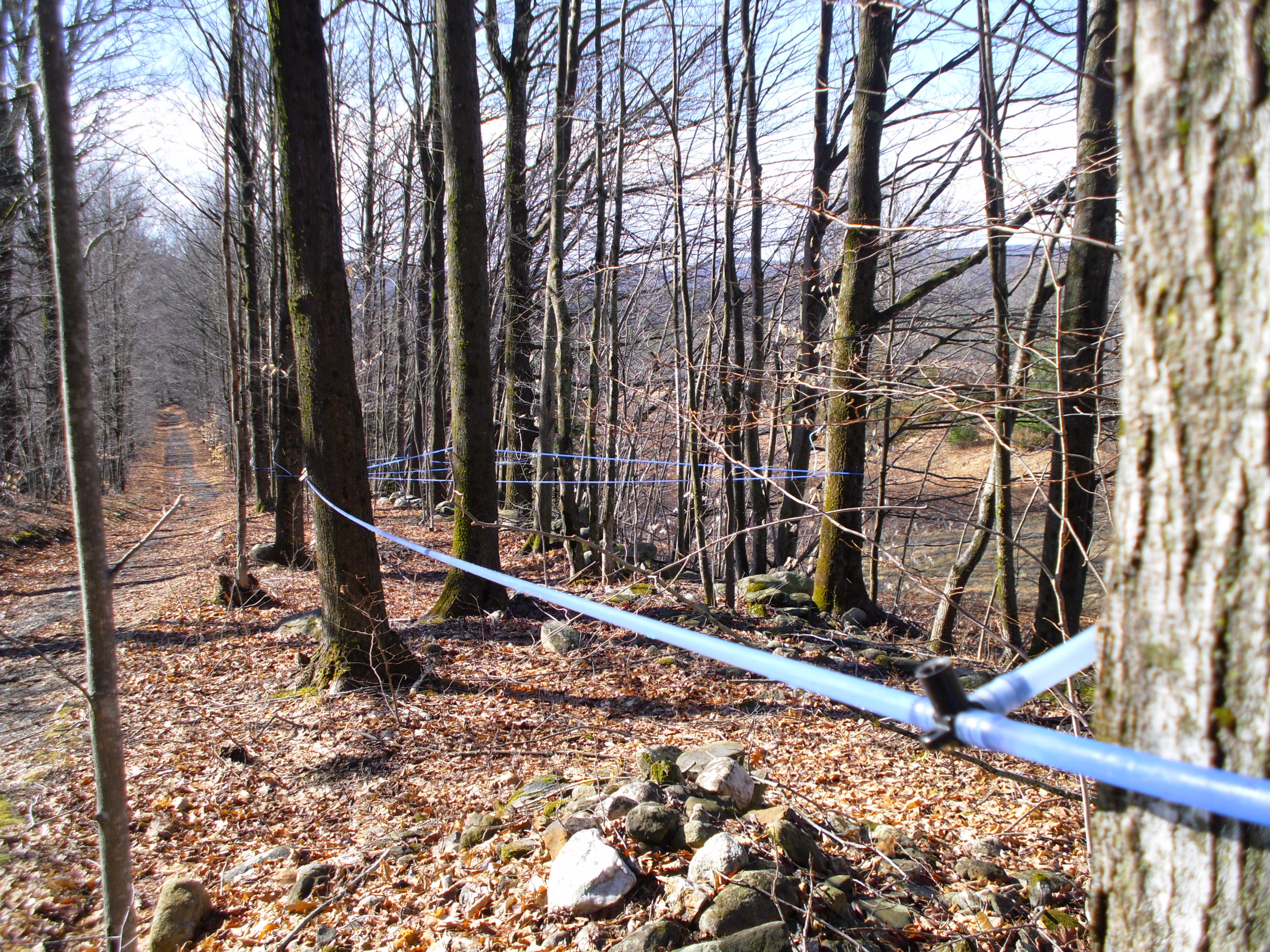




The link to the video of the song you quoted lyrics from here is now private and unwatchable. Would you happen to remember the artist’s name at least, even if not the song title itself? I’m from New England and the thought of New England folk music never even occurred to me – I always associated it with southern states! Looking to find some more music from my homeland and use it as inspiration for my own music and sound art. Thanks in advance for reading, and if you end up responding, doubly so.
Hi Mike – just seeing this! It’s Dar Williams, Iowa. I added it to the post!